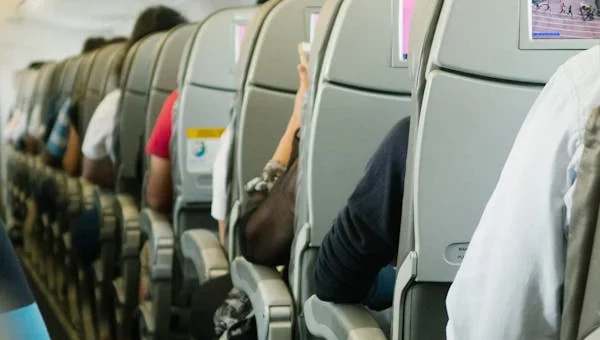
Introduction
Selecting the right commercial aircraft is a critical decision for airlines that impacts profitability, operational efficiency, and customer satisfaction. With numerous aircraft models available, airlines meticulously evaluate several factors to determine which planes best suit their route networks, business models, and long-term strategies. This article explores why airlines prefer certain commercial aircraft by examining the key factors influencing these decisions.
1. Operational Efficiency and Cost Management
Fuel Efficiency and Range
Fuel costs represent a significant portion of an airline’s operating expenses, often accounting for up to 30% of total costs. Consequently, fuel-efficient aircraft are highly preferred because they reduce expenses and improve profit margins.
Modern commercial aircraft incorporate advanced engine technologies and lightweight materials that optimize fuel consumption. For example, aircraft like the Boeing 787 Dreamliner and Airbus A350 utilize composite materials and next-gen engines, enabling longer ranges and better fuel economy compared to older models.
Key points:
-
Fuel efficiency lowers operational costs.
-
Longer range expands route options.
-
New technology supports environmental goals.
Maintenance and Reliability
Frequent and costly maintenance can reduce aircraft availability, impacting flight schedules and increasing expenses. Airlines prefer aircraft models with proven reliability and easier maintenance protocols to minimize downtime.
Manufacturers offer comprehensive maintenance programs and ensure spare parts availability, influencing airlines’ choices. For instance, aircraft families like the Boeing 737 and Airbus A320 series have extensive support networks worldwide, making them a preferred choice for many carriers.
2. Passenger Capacity and Comfort
Seating Capacity and Configuration
The number of passengers an aircraft can carry directly affects revenue potential. Airlines choose aircraft with seating capacities aligned with their route demand and market segment. Regional carriers often prefer smaller jets for short-haul routes, while international airlines opt for larger wide-body aircraft on long-haul flights.
Airlines also consider cabin layout flexibility. Modern aircraft allow for various seating configurations, from all-economy to multi-class setups, helping airlines tailor passenger experience and maximize revenue per flight.
Passenger Experience and Amenities
Passenger comfort is a growing priority, as customer satisfaction drives brand loyalty. Airlines prefer aircraft with features such as wider seats, larger windows, quieter cabins, and advanced in-flight entertainment systems.
For example, the Boeing 787 is known for its higher cabin humidity and lower cabin altitude, which reduce passenger fatigue on long flights. These amenities influence aircraft selection, especially for premium carriers targeting business and luxury travelers.
3. Route Network and Market Demand
Matching Aircraft to Routes
Airlines select aircraft based on the specific demands of their route network. Short-haul routes require planes optimized for quick turnaround and efficient short flights, such as the Embraer E-Jets or Bombardier CRJ series. Conversely, long-haul international routes demand aircraft with extended range and higher capacity.
Example:
| Route Type | Preferred Aircraft Types | Key Features |
|---|---|---|
| Short-haul | Airbus A320, Boeing 737, Embraer E-Jet | Quick turnaround, fuel-efficient |
| Medium-haul | Boeing 757, Airbus A321XLR | Extended range, moderate capacity |
| Long-haul | Boeing 787, Airbus A350, Boeing 777 | High capacity, long range, passenger comfort |
Market Growth and Fleet Flexibility
As markets evolve, airlines require flexible fleets that can adapt to changing demand. Aircraft that can be easily reconfigured or redeployed on different route types provide competitive advantages.
Fleet commonality is also critical; airlines prefer aircraft families that allow pilot and crew cross-qualification, reducing training costs and improving operational flexibility.
4. Economic and Environmental Considerations
Cost-Benefit Analysis
While newer aircraft may have higher acquisition costs, their long-term savings on fuel, maintenance, and operational efficiencies often justify the investment. Airlines perform detailed cost-benefit analyses considering total cost of ownership over the aircraft lifecycle.
Leasing options also influence aircraft preference, as some carriers avoid large capital expenditures by opting for flexible lease agreements.
Environmental Impact and Regulations
Increasing environmental regulations push airlines to adopt cleaner, quieter aircraft. Preference for models with reduced carbon emissions aligns with global sustainability goals and improves public perception.
Aircraft with better fuel efficiency and lower noise footprints, such as the Airbus A320neo or Boeing 737 MAX, are increasingly favored in regions with strict environmental controls.
5. Manufacturer Support and Technological Innovation
Manufacturer Reputation and Support
Strong manufacturer support networks, including training, maintenance, and parts availability, are vital factors. Airlines trust manufacturers with a track record of reliability and responsiveness.
For example, Airbus and Boeing offer global service centers and extensive pilot training programs, which can influence airline loyalty and repeat purchases.
Technological Advancements
Innovations such as fly-by-wire systems, advanced avionics, and predictive maintenance improve aircraft performance and safety. Airlines prefer models incorporating cutting-edge technology that reduces operational risks and enhances efficiency.
Conclusion: The Strategic Choice of Commercial Aircraft
Airlines prefer certain commercial aircraft because these models align closely with their operational goals, market demands, cost structures, and customer expectations. By carefully balancing fuel efficiency, passenger capacity, maintenance, route compatibility, and environmental considerations, airlines optimize their fleets for success.